You come home after a hard day of school and want to take a few minutes to rest before you start your homework. You sit on your couch and turn on your television. Do you know why you can do this? Electricity moves through currents to turn your television and other electronics on.
Current is the moving of charge, or electric power, from one place to another. Any time you use something that is electric, such as your cell phone, current is moving through it and making light, making noises or showing pictures. People have used electricity to make their lives better. How does this current make things work? Let's look and see.
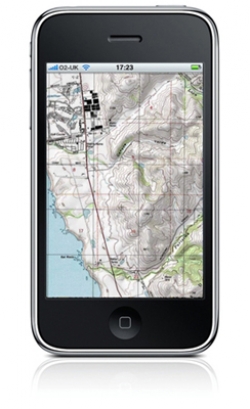
Physics describes the way that electricity flows through the circuits of this device.
@gletham GIS, Social, Mobile Tech Images
Circuits
Charge is made when electrons move from place to place. So, to move charge, we are really moving electrons. Even though they are small, they still need some space to move through. A
circuit is a path for small parts with charge to move around. In a flashlight, this is what gets energy from the battery into the light bulb to turn the light on when you need it to. The circuit itself doesn't make the energy. Instead, it takes it from some place else and moves it to where it needs to go to power what needs to be powered. A source is a place where energy comes from. In a flashlight, that is the battery.
Wires in circuits are made of certain kinds of metal because metal is a conductor. A
conductor is something that can move electric energy. Metal is a great one because it can move a lot of energy. A bad one is glass or rubber, which stops it from moving. Most wires are metal for this reason.
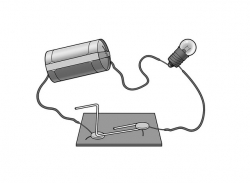
A simple circuit is shown in this picture.
Siyavula Education
Closed and Open Circuits
There is an easy way to make sure that the energy source is being saved when you don't need it, and that's by opening a circuit. When you open a circuit (flipping a switch or pushing a button on your flashlight), you make a break in the wire that will stop the flow of electricity from the source to the light bulb. When you flip the switch or push the button again and something turns on, you close the circuit. A closed circuit has an direct conductor joining the source to the light bulb, so that electric current can flow again and that the thing is turned on. This is how you switch lights off and on in a room. The most simple circuit would be a wire that connects one side of a battery to a light bulb, and then connects back to the other side of the battery.
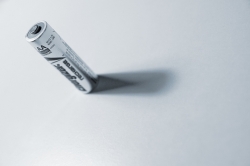
A source of energy can be a battery, like the one shown.
Paul Hudson
Series CircuitsLet's add another light bulb next to the first one in our simple circuit from before. There are now two light bulbs sharing the energy from one battery as the electricity moves through the wire. A
series circuit is a circuit where current only has one path to flow. This means that when the energy leaves the battery and moves through the wire, it can only go in the direction of the single wire until it circles back again, powering each part as it goes through it.
Think about it like this: A giant cookie rolls out of a bakery and down the street. As it rolls down the only path it can take, it goes by three hungry people standing a few feet apart from each other on the sidewalk. Each person it goes by takes an equal bite. Over time, it's all eaten up because it was divided evenly among the hungry people, and all of the people are still hungry because they only got a little bit of food. In this case, the bakery is the source of energy, the cookie is the current, and the hungry people are the light bulbs. The only road the cookie can take is the one wire in your circuit, which is like a series circuit because all three people were standing on the same path to your last stop. The more people that cookie goes by, the smaller of a piece each person will get. This happens slowly because there is only one way to roll.
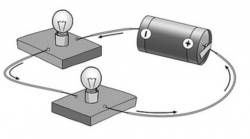
This is a series circuit with two light bulbs.
Siyavula Education
The more bulbs you add to a series circuit, the less bright each one becomes. Over time, if you add more light bulbs than the one battery in your series circuit can power, the bulbs will not shine at all because the energy has been divided so much that it's too little to turn each bulb on.
Parallel Circuits
A way to get around some of the bad things about of a series circuit is to arrange your parts in different ways. A
parallel circuit has more than one path for electric current to move through. Let's go back to our simple circuit from before. Let's string another wire from the battery to another light bulb. We have now made a parallel circuit, which is named because parts are often arranged on parallel wires like a ladder.
The way current moves through a parallel circuit is different than the way it moves through a series circuit. This is because the battery can send the same amount of power at the same time down the different paths to each light bulb, so all bulbs shine as bright as they can. But the battery can get used up quickly. Let's go back to talking about cookies. A parallel circuit would look like this: two cookies are rolling out of a bakery down the same street. Each cookie turns left at a different point and rolls past a hungry person, who gets to eat the whole cookie all alone. Each person is eating their own cookie at about the same time, because in this case, they are rolling very fast! While everyone gets fully fed, it's not long before all cookies are used up, and the source (the bakery) would have to send more out as soon as they could.
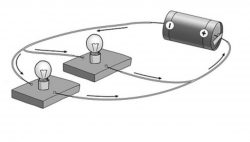
This image shows a parallel circuit - note that the two light bulbs are on wires which are parallel to one another.
Siyavula Education
There is something good about this that is different than in our holiday lights example. If one bulb burns out, the rest of the bulbs can stay lit because they each have their own branch of wire that brings energy from the source. This means that the circuit stays closed everywhere else. If there is more than one light bulb in a lamp that are all turned on by one switch, they are likely to be arranged in parallel circuits. This way, you can replace one while the other bulbs still shine.
References
Adapted by the RocketLit team from: